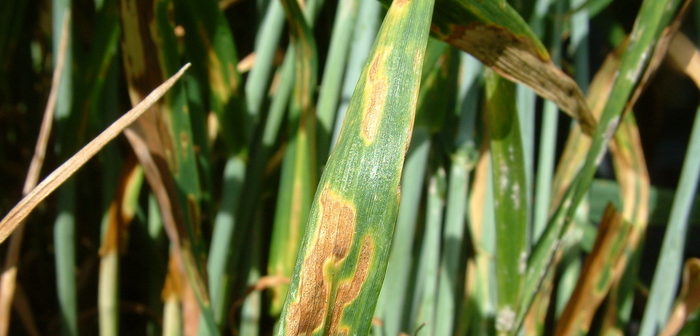Do not simply abandon multi-site fungicide protection from wheat and barley disease control programmes after 20 May 2020, once the popular multi-site chlorothalonil can no longer be used, experts are urging.
Some growers may be planning to do this, says Syngenta senior field technical manager, Iain Hamilton, based on farmer feedback.
But that could both compromise control of key diseases, such as Septoria tritici in wheat, especially in wetter weather, and leave other single-site fungicides in the programme at heightened risk of resistance, he stresses.
In addition, there is strong evidence to support switching to an alternative multi-site once chlorothalonil can no longer be used, says ADAS principal research scientist, Jonathan Blake, not just for disease control but also for yield.
“Multi-sites are still important, absolutely,” says Mr Blake. “Even when we can’t use chlorothalonil, there is good evidence to support the use of other multi-sites, such as folpet. We have seen clear yield benefits in high pressure situations that justify its inclusion from a cost perspective.
“From all the work we’ve done on folpet, we also expect it to be a benefit with new chemistry, just as with other chemistry,” he adds.
Iain Hamilton says omitting a multi-site after 20 May, just because chlorothalonil can longer be used, could be especially damaging because the important T2 fungicide timing is likely to fall after this date in this season’s late-planted winter wheat crops. T2 will also almost certainly fall after 20 May in this season’s increased area of spring barley, he notes.
“Without multi-site protection at this important yield-building time, it won’t just increase resistance risks, it will also leave these crops more open to potential losses,” says Mr Hamilton.
“Even when using a robust base fungicide treatment, we have seen in trials that adding a multi-site to it can still increase yield. Work in winter wheat last year showed that including folpet at T2 added an extra 0.3 t/ha on top of the 11 t/ha from an SDHI base treatment of Elatus Era. It also gave an additional £34/ha extra margin.
“Similarly in winter and spring barley, adding folpet to Elatus Era at T2 was seen to reduce Ramularia levels, improve yield and give around £18-£20/ha extra margin.
“A multi-site fungicide is good at protecting other fungicides against resistance because it controls disease at multiple points in its biology, and not just at one. We have already seen reductions in activity among azole fungicides to certain diseases. We don’t want to see further shifts among azoles or indeed among important SDHI fungicides by omitting multi-sites,” Mr Hamilton adds.




